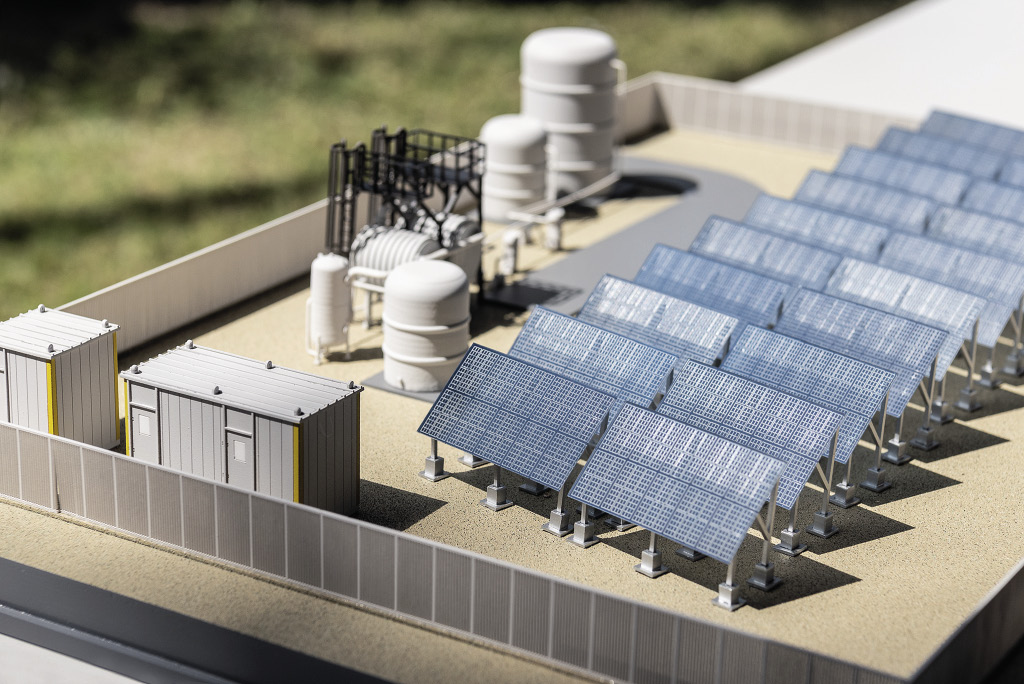From pv magazine Global, May edition
About 96.5% of the water on our planet is in oceans and seas, and to unlock this resource we will have to desalinate. Most desalination plants today are powered by fossil fuels. This is not sustainable and accelerates climate change.
An initial step in making water desalination more sustainable is simply switching to renewable energy. The techniques most often used in the desalination industry for producing potable water fall into two technology categories: membrane-based (such as reverse osmosis, nanofiltration, and electrodialysis) and thermal (such as multi-stage flash distillation, multi-effect distillation, and vapor-compression distillation).
Membrane-based desalination techniques usually only require electricity. Therefore, it is logical to couple it to wind or solar power. In the last decade, the price of PV has dropped rapidly. In 2018, ACWA Power announced its ambitious solar PV project to deliver a record-low tariff of $0.0234/kWh. With increasing demand for desalination, we can expect to see more PV powered membrane desalination plants installed. In fact, solar PV powered reverse osmosis and electrodialysis systems already exist on the market.
Technology options
However, we should not rely solely on membrane-based desalination technologies. There should be a good mix between thermal and membrane-based desalination, because in some situations thermal desalination is more logical – for example, when the salinity of the feed water fluctuates over time or when a heat source is available (e.g. solar energy or waste heat).
Thermal desalination technologies require heat and electricity to operate. Solar energy harvesting technologies, such as concentrated solar power (CSP) and photovoltaic-thermal (PV-T), have the benefit of delivering the required thermal energy as a by-product while generating electricity. CSP is better suited when high-temperature thermal energy (≥ 100°C) is required for desalination, such as for multi-stage flash distillation. While PV-T is sufficient when low-temperature thermal energy is needed, such as for multi-effect distillation, where the operating temperature in an effect is ideally between 40°C and 70°C.
Most PV-T designs on the market are made by attaching a metallic heat exchanger to the back of a PV panel. The system is thermally insulated, and heat is extracted by feeding a fluid, such as water, through the heat exchanger. An alternative PV-T design developed by Desolenator has a water reservoir attached under the PV panel instead of a heat exchanger. This design is more effective in cooling the PV panel. This is important because at high temperatures (≥ 40°C) PV panels will have a lower electrical efficiency and a reduced lifespan. PV-T will need to be further improved before it can serve the desalination industry.
Earlier this year, Desolenator won the MESIA Best Solar Innovation Award. The proposal was to use PV-T to power a thermal desalination plant based on multi-effect distillation with mechanical vapor compression to desalinate seawater. The solar farm is designed in such a way that it produces sufficient thermal – as well as electrical – energy to run the desalination plant off-grid 24/7. During the day, excess solar energy is stored in a hot water tank and batteries power the plant at night. A demonstration pilot of this design, which produces up to 10 m³ of water per day, is being built at Jebel Ali at a Dubai Electricity & Water Authority (DEWA) site.
About the author
Jiajun Cen is cofounder of AquaBattery (developing technologies to store electrical energy in water and table salt) and the CTO of Desolenator (developing solar-powered desalination technologies). He is a listee on Forbes 30 Under 30 in the category “Manufacturing & Industry.” His mission is to help accelerate the energy transition to renewable energy resources, such as solar and wind, by developing safe, scalable, and sustainable batteries using water technologies. Furthermore, he aims to provide clean and safe drinking water to everyone in the world, sustainably.
This content is protected by copyright and may not be reused. If you want to cooperate with us and would like to reuse some of our content, please contact: editors@pv-magazine.com.








Interesting case, well done, but only half the solution. Technology applied to water treatment does not alone address sustainability of source of supply, and water stress may be only temporarily mitigated with treatment technology. Science-based supply source planning and management (the other half of the situation) is a first requirement for long term sustainable water supply.
– G. Moore, Hydrologist